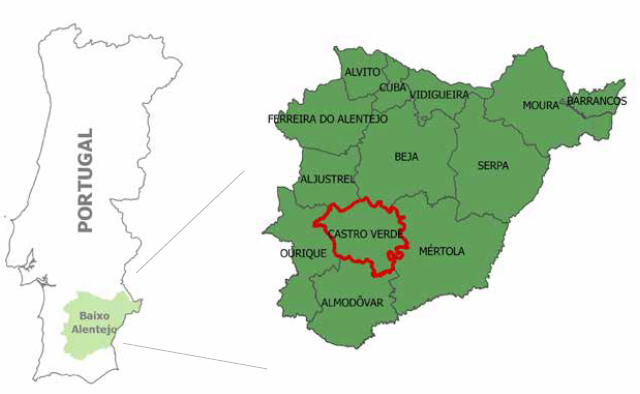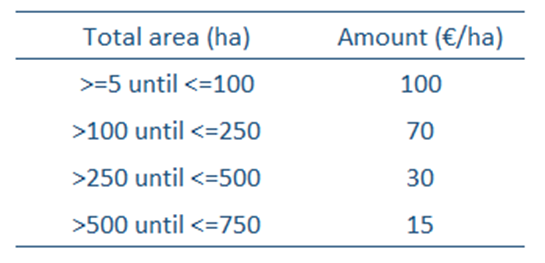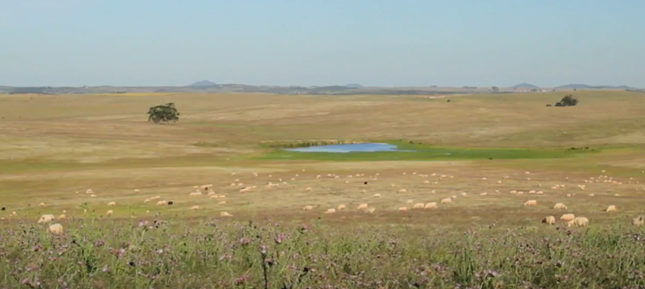Introduction to the challenge addressed
Careful management of agro-systems with the aim of maintaining or improving biodiversity leads to an increase in the sustainability of agricultural production, making systems more resilient to long-term pressures such as climate change and soil degradation. Indeed, biodiversity enhances ecosystem services because those components that appear redundant at one point in time become important when changes occur (1).
Description of Innovation
The Castro Verde Biosphere Reserve
The Castro Verde Biosphere Reserve, designated by UNESCO in 2017, is located in the heart of “Campo Branco”, in the extensive plains of “Baixo Alentejo”, southern Portugal. Agricultural practices have evolved over time to a traditional rotation, in which after two years of cereal crops, the land is fallow so that it regains fertility as meadows for cattle. Here, agriculture and grazing have coexisted for a long time, having shaped a landscape rich in biodiversity and of high conservation value, the cereal steppes, covering a total area of 57000 hectares (2).

Location of the Biosphere Reserve of Castro Verde.
Hyperlink to access the map on the internet: https://drive.google.com/open?id=13saLzmdA4D2MJgTcePE_Cdpp52k&usp=sharing
Good Agricultural Practices to promote Biodiversity
The production of animal food and animal husbandry in general depend on biodiversity and at the same time play an important role in shaping biodiversity. On the one hand, agriculture and animal husbandry led to the decline of many wild species in Europe since the Neolithic. However, on the other hand, in some instances these activities allowed for an increase in landscape and species diversity, at least at the local scale (3).
Below there is a list of good practices associated with biodiversity proposed by Portuguese farmers organizations to integrate the common agricultural policy reform:
- Multi-functional hedgerows;
- Stone walls;
- Groves, isolated trees and natural regeneration;
- Riparian galleries;
- Temporary pond;
- Small dams;
- Fauna watering points;
- Nest boxes and shelter boxes;
- Agricultural crops for fauna;
- Reduction of hay or silage harvesting area;
- Conditioned grazing in spring;
- Livestock fences adapted to wild fauna;
- Fallow;
- Do not sow part of agricultural parcels;
- Bushes.
To ensure Castro Verde Biosphere Reserve goals as a place of excellence that serves as a living laboratory for the demonstration of sustainable development, crop and livestock farming in harmony with nature is mandatory (4).
In a set of more than a dozen good agricultural practices for biodiversity, fences for the production of cattle adapted to wild fauna, are extremely important for the Castro Verde Biosphere Reserve. Farmers whose farms are within this Biosphere Reserve, can join the financial support program for the conservation of steppe-land birds and be rewarded with a set of commitments.
The financial supporting program for Castro Verde Biosphere Reserve
This program started in 1995 under the EU 2078/92 regulation with the following objectives:
- Promote nature conservation through the maintenance and quantitative improvement of the steppe bird habitat.
- Minimize agricultural income losses resulting from cultivation and management techniques compatible with nature conservation.
- Contribute to the conservation of cultivated spaces of great natural value.
To join the financial support program, the farmers' commitments are:
- Keep an updated record of operations carried out in the agricultural area subject to commitment.
- Keep a low animal density for grazing herds.
- Carry out soil mobilization without overturning, unless authorized by the Local Management Board (LMB).
- Annually sow rainfed cereal between 20% to 50% of the rotation area.
- Leave natural weed strips that must be equal to or greater than 5% of the parcel's area.
- Sow 2% of the production area with legumes for wildlife.
- Respect the cut-off dates for sown crops and agricultural mobilization operations defined annually by the LMB.
- Respect the interdiction of grazing and soil mobilization in the period between March 15th and June 30th.
- Need for LMB approval for installation of fences and groves.

Financial support amounts
Impact on farm performance
In addition to the positive impact on biodiversity conservation in general and steppe bird species in particular, tourism has also developed, especially nature tourism, focused on the fruition of the natural heritage, nature and birdwatching.
This allowed the appearance of new accommodation units to receive tourists as well as farms with appropriate structures for bird watching.
Audio-visual material
Environmental Education Center in Castro Verde (click on the image to see the video)
The most emblematic steppe-land bird |Great Bustard – Otis tarda
Marco Valentini (2017) https://macaulaylibrary.org/asset/204572701
Farmer comment (for Good Practices)
The development of bird watching has promoted the region, making it interesting for tourists who are not interested in this topic, making the rural accommodation units an interesting complementary activity to the farm, as is the example of Apariça farm.
Further information
(1) FAO - What is agricultural biodiversity and what are ecosystem services?
(2) Liga para a Protecção da Natureza – Reserva da Biosfera de Castro Verde
(3) Food & Biodiversity Campaign – Guideline on Livestock Production
https://www.business-biodiversity.eu/bausteine.net/f/9102/LIFEFoodBiodiversity_GuidelineLivestock.pdf?fd=3
European Business & Biodiversity Campaign
https://www.business-biodiversity.eu/en/welcome
(4) Nomination form – Castro Verde Biosphere Reserve
